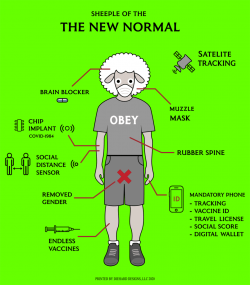Daryl Hunt
Your Worst Nightmare
- Banned
- #1
I ran across this. It's not real informative but it's good enough for the layperson. There is more to the care and feeding or a proper mask.
(You PartyoftheRumpers and brain dead can skip this message)
Breaking down different types of coverings, the proper way to take them on and off and how to tell if a mask is professional grade
By and Andrew Williams
July 28, 2020 10:22 am ET
Face masks are a simple way to help prevent the spread of the new coronavirus through talking, coughing or sneezing, scientists and public-health specialists say. But they need to be worn properly.
While some types of masks are more effective than others, public-health officials say any face covering—even a bandanna—is better than nothing.
Here’s how different types of masks stack up, and how they are meant to be used.
Cut from different cloth
Common masks fall into three categories: cloth masks or coverings like gaiters, intended to prevent an infected person from spreading the virus by catching large droplets; surgical masks, with a more sophisticated design also meant to prevent the wearer from spreading diseases; and N95 masks, which protect the wearer as well, and fit tightly to the face.
Cloth
- Typically homemade
- Style and materials vary widely
- Prevents wearer from spreading disease
- Work in herd-immunity: the more wear masks,
the more effective they are
- Wash after use
Surgical
- Loose fit
- Prevents wearer from spreading disease
- Dispose after use
- Made from a material called polypropylene
N95
- Tight fit, must be fit tested
- Protects wearer if fitted properly
- Limited quantity
Fit vs. function
A good cloth mask filters well and is comfortable to breathe through.
A cloth mask should consist of three layers: an inner layer near the mouth that can get moist, a middle filtration layer and an outer layer exposed to the outside environment. Here are the materials for homemade masks that do this best, according to the World Health Organization, using a scale that combines filter quality and breathability. A higher rating is better.
(You PartyoftheRumpers and brain dead can skip this message)
Breaking down different types of coverings, the proper way to take them on and off and how to tell if a mask is professional grade
By and Andrew Williams
July 28, 2020 10:22 am ET
Face masks are a simple way to help prevent the spread of the new coronavirus through talking, coughing or sneezing, scientists and public-health specialists say. But they need to be worn properly.
While some types of masks are more effective than others, public-health officials say any face covering—even a bandanna—is better than nothing.
Here’s how different types of masks stack up, and how they are meant to be used.
Cut from different cloth
Common masks fall into three categories: cloth masks or coverings like gaiters, intended to prevent an infected person from spreading the virus by catching large droplets; surgical masks, with a more sophisticated design also meant to prevent the wearer from spreading diseases; and N95 masks, which protect the wearer as well, and fit tightly to the face.
Cloth
- Typically homemade
- Style and materials vary widely
- Prevents wearer from spreading disease
- Work in herd-immunity: the more wear masks,
the more effective they are
- Wash after use
Surgical
- Loose fit
- Prevents wearer from spreading disease
- Dispose after use
- Made from a material called polypropylene
N95
- Tight fit, must be fit tested
- Protects wearer if fitted properly
- Limited quantity
Fit vs. function
A good cloth mask filters well and is comfortable to breathe through.
A cloth mask should consist of three layers: an inner layer near the mouth that can get moist, a middle filtration layer and an outer layer exposed to the outside environment. Here are the materials for homemade masks that do this best, according to the World Health Organization, using a scale that combines filter quality and breathability. A higher rating is better.
Last edited:






